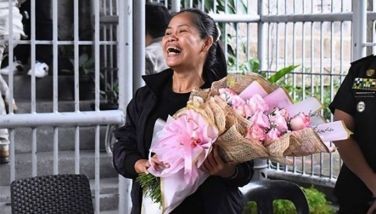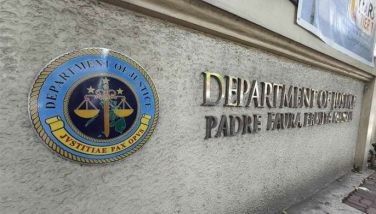‘Demilitarized zone’ to separate MILF rebels, local militia units
July 11, 2006 | 12:00am
COTABATO CITY — The joint ceasefire committee started establishing yesterday a "demilitarized buffer zone" that would separate feuding Moro Islamic Liberation Front (MILF) rebels and local militia units at the tri-boundary of Maguindanao’s neighboring Shariff Aguak, Mamasapano and Datu Unsay towns.
The scheme was agreed upon by the government and the MILF’s Coordinating Committees on the Cessation of Hostilities (CCCH) during a tripartite meeting with officials of the Malaysian-led International Monitoring Team here Sunday night.
The two ceasefire committees and the IMT, led by Malaysian Gen. Pahlawan Soheimi, had succeeded in disengaging the feuding rebels and militiamen in the three towns and in setting up demarcations that would separate them as part of the measures aimed at staving off renewed confrontations.
Retired Gen. Ramon Santos, chairman of the government’s CCCH, said the "buffer zones" will provide the villages affected by the June 28 to July 6 skirmishes a protective circumference of demilitarized areas to be monitored extensively by representatives from the military and the MILF.
Santos said non-government organizations involved in the enforcement of the ceasefire and peace advocacy groups will also be allowed to help oversee the "buffer zones."
The six-day scattered firefights in Mamasapano, Shariff Aguak and Datu Unsay have forced some 5,000 families to evacuate to safer grounds.
The hostilities, sparked by the deadly June 23 bombing in Shariff Aguak that left seven people dead and nearly killed Maguindanao Gov. Datu Andal Ampatuan, have virtually subsided but the evacuees are still reluctant to return to their villages.
Santos said one of their concerns now is the return of the evacuees to their villages.
He added that the joint ceasefire committees and the IMT are also keen on the reconstruction of their monitoring base in Shariff Aguak which was razed when rebels and militiamen figured in gunbattles in the area.
The scheme was agreed upon by the government and the MILF’s Coordinating Committees on the Cessation of Hostilities (CCCH) during a tripartite meeting with officials of the Malaysian-led International Monitoring Team here Sunday night.
The two ceasefire committees and the IMT, led by Malaysian Gen. Pahlawan Soheimi, had succeeded in disengaging the feuding rebels and militiamen in the three towns and in setting up demarcations that would separate them as part of the measures aimed at staving off renewed confrontations.
Retired Gen. Ramon Santos, chairman of the government’s CCCH, said the "buffer zones" will provide the villages affected by the June 28 to July 6 skirmishes a protective circumference of demilitarized areas to be monitored extensively by representatives from the military and the MILF.
Santos said non-government organizations involved in the enforcement of the ceasefire and peace advocacy groups will also be allowed to help oversee the "buffer zones."
The six-day scattered firefights in Mamasapano, Shariff Aguak and Datu Unsay have forced some 5,000 families to evacuate to safer grounds.
The hostilities, sparked by the deadly June 23 bombing in Shariff Aguak that left seven people dead and nearly killed Maguindanao Gov. Datu Andal Ampatuan, have virtually subsided but the evacuees are still reluctant to return to their villages.
Santos said one of their concerns now is the return of the evacuees to their villages.
He added that the joint ceasefire committees and the IMT are also keen on the reconstruction of their monitoring base in Shariff Aguak which was razed when rebels and militiamen figured in gunbattles in the area.
BrandSpace Articles
<
>
- Latest
- Trending
Trending
Latest
Trending
Latest
Recommended






























